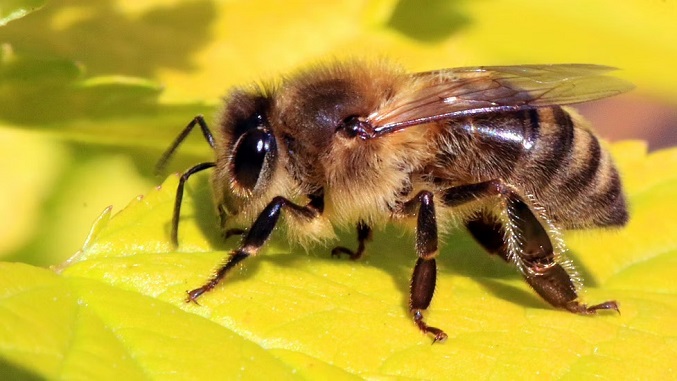
Vari (Athens) [Greece]: The B.S.R.C. 'Alexander Fleming' in Greece has perfected a method for analysing DNA traces in honey, revealing the species with which honeybees interact. The findings of the research were published in the journal 'Molecular Ecology Resources'.
This collaborative work led by researcher Dr Solenn Patalano allowed the monitoring of the variability of bee diets across the year, revealing bee microbiota in a non-invasive way, as well as identifying pathogenic species they are confronted by.
Why understanding the honeybee's ecological niche is important?

What defines an organism's ecological niche is a delicate balance of interactions and adjustments to other species coexisting within the same habitat. By pollinating trees and flowers, honeybees exploit a large number of flowering plant species for their own food resources and growth.
On the other hand, honeybee colonies are also weakened when environmental conditions favour the propagation of
pathogenic species, such as Varroa mites. The species dynamics of the honeybee ecological niche are therefore inextricably linked with the type of habitat the bees live in and its seasonal changes.
Faced with the increasing restructuring of agricultural areas and the effects of climate change, bee ecological niches are becoming more vulnerable. A better understanding of the dynamics of interactions between bees and surrounding species will help to identify risk periods and zones for bees.
"This is extremely important in rural and agricultural environments, where species interactions influence the productivity of crops. It's compelling how much of our food and survival depends on the proper functioning of tiny insects!" commented Anastasios Galanis, the first author of the study.
Honey, a unique marker of environmental plant diversity

Honeybees make honey by regurgitating the nectar and pollen from the flowers they forage and then placing it in the cells of their hive until enough water evaporates. Through this process, honey comes into contact with a variety of organisms and, therefore, contains DNA from multiple species, collectively called environmental DNA (eDNA); this originates from foraged plants, the gut bacteria of bees, and potential hive pathogens.
The now published, optimised method called 'direct-shotgun metagenomics', involves sequencing and comprehensive identification of the DNA fragments found in honey. As explained by Galanis: "The design and testing of a bioinformatic pipeline tuned for honey metagenomic data allow us to increase sensitivity and specificity; thus, we can be quite confident about the identification of certain species".
In this study, researchers analysed several samples of honey from an apiary located in a typical Mediterranean landscape. They identified more than 40 species of plants that reflect all the botanical diversity surrounding the hives. "What was very striking", said Dr Patalano, "is to see how variable the abundance of plant eDNA is over the seasons, reflecting perfectly the behavioural foraging adaptations that follow plant flowering."
Researchers also compared the different samples of honey by the use of melissopalinology (using the shape of pollen grains for characterization). Beyond the great complementarity of the two analyses, the study revealed that the metagenomic approach also reveals non-pollen foraging behaviour, such as the foraging of pine honeydew, an important food resource for the survival of bees in early autumn.
Anticipating disease and spread of pathogens

Contrary to what one might think, the ecological niche of bees extends well beyond plants. In the analysed honey samples, the researchers revealed an even greater number of bacterial DNA species, the vast majority of which emanates from microorganisms considered to be harmless and which comprise the core species of the bee microbiome.
Dr Patalano explains: "As the human gut microbiome, the gut microbiome of the bee is an important element of their health. We already know that environmental stressors, such as pesticides, can seriously damage gut microbial communities and increase the risk of bee diseases. But how this works remains largely unknown." With this work, the researchers provide evidence that the honey metagenomics approach allows the study of gut microbiome variation without the need of sacrificing the bees.
Researchers also looked for the presence of DNA from

putative pathogens. They found that traces of Varroa mite eDNA in honey directly matched with observed hive contamination. It is a promising sign that this research could eventually be used to monitor and anticipate disease and pathogens in large scale studies.
"In the future, this work might also have very important implications for humans. If we want to ensure ecosystem services, such as fruit and vegetable pollination, while maintaining species biodiversity, we also need to safeguard bee health. Our challenge is to build biomonitoring strategies in order to identify the fittest ecological niches for all pollinators", concluded Dr Patalano. (ANI)







